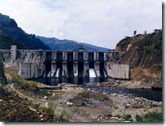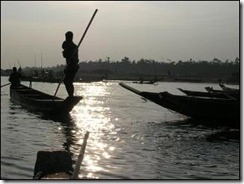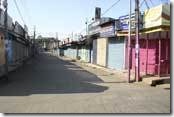By Praveen Swami
 AP Rescuers search for bodies in the mangled compartment of the derailed train in Sardiha near West Midnapore dt of West Bengal on Saturday. Photo: AP
AP Rescuers search for bodies in the mangled compartment of the derailed train in Sardiha near West Midnapore dt of West Bengal on Saturday. Photo: AP
Winning the war against Maoists does not need combat jets or artillery. It needs police forces with counter-insurgency capacities and training.
Aizawl woke that Thursday morning to the thunder of combat jet engines and falling bombs. Earlier that week, Mizo National Army insurgents had engaged military garrisons strung across the State. Mizoram's capital fell days later. Prime Minister Indira Gandhi responded by ordering the Indian Air Force to attack the city. “Most houses in Dawrpui and the Chhinga Veng area were reduced to ashes,” a survivor recalled. No one knows for certain just how many died.
Three decades after the March 4, 1966 bombing of Aizawl, India is once again debating the use of massive military force — including air strikes — to fight an insurgency. Last week's tragedy in West Bengal, preceded by large-scale killings of civilians in Chhattisgarh, have made clear that New Delhi's offensive against the Maoist insurgency that has torn apart swathes of eastern and central India is floundering.
Policymakers are now considering committing the Army and air assets to provide logistical and fire support to counter the Maoist campaign. For the most part, the plans envisage only a limited support role for the armed forces — the use of helicopters, for example, for transporting commandos in remote forest areas, or unmanned aerial vehicles equipped with foliage-penetrating radar to locate large Maoist formations. But as public pressure mounts on a government that promised quick success against the Maoists, more aggressive military options will seem increasingly seductive to policymakers. India's rich experience of fighting insurgencies, though, shows that maximum force not only inflicts hideous levels of civilian casualties but it rarely secures decisive outcomes.
Lessons from Manipur
In June 1986, Prime Minister Rajiv Gandhi arrived at an agreement with the Mizo National Front, laying the foundations for a peace that has survived more than two decades. The 1986 Accord, though, was preceded by a counter-insurgency campaign of colonial-era barbarism: hundreds were executed; thousands tortured; rape was carried out on a massive scale. Designed to crush a rebellion that seemed, at one stage, to be on the edge of success, India's use of the military in Mizoram ended up engendering an insurgency that festered for decades.
Like the Maoist insurgency, the Mizoram conflict had its roots in deprivation. In 1959, the region saw a famine which claimed thousands of lives. In 1961, former Indian Army officer Pu Laldenga formed the Mizo National Famine Front to campaign against New Delhi's apathy. Laldenga later transformed the Famine Front's political offspring, the Mizo National Front, into a potent political force. But by 1963, the lack of state action to address conditions in the Mizo hills led the MNF to initiate an insurgency seeking independence from India.
The army campaign seemed, at first, to work. Forces from the Silchar-based 61 Mountain Brigade were able to rapidly recapture key towns, including Aizawal. Posts taken by the MNA were recovered and its guerrillas forced to shift their headquarters across the border into East Pakistan. The fighting was intense: the Indian forces suffered 59 fatalities, 126 were injured and 23 went missing; 95 of the MNA died and 35 were injured.
But from the summer of 1966, the MNA merged into the population and began launching guerrilla strikes against the Army. Lacking effective local intelligence, unfamiliar with the terrain, and forced to rely on a vulnerable road network for logistical support, the Army lost 95 men between March and December 1966 — more than the number killed in the first phase of fighting.
Military strategists found a template for their response in imperial Great Britain's war against the Malayan Communist Party. In much modern writing, the anti-communist campaign in Malaya is marketed as an example of how victory can be had by winning hearts and minds, rather than the application of force. The idea suffuses much writing on contemporary counter-insurgency. But, as David Benet has noted, “coercion was the reality — ‘hearts and minds' the myth.” Field Marshal Gerald Templar, the architect of the Malaya campaign, referred in 1968 to the ‘hearts and minds' doctrine as a “nauseating phrase I think I invented.”
From January 1967, the security forces in Mizoram began cutting the insurgency off from its peasant base. Eighty per cent of Mizoram's population was resettled, mostly by force, into barricaded enclaves known as Protected and Progressive Villages.
In a signal 2001 essay for the journal Faultlines, the former Assam Chief Secretary, Vijendra Singh Jafa, recorded how the village of Darzo was relocated. “My orders,” a soldier he interviewed said, “were to get the villagers to collect whatever moveable property they could and to set their own village on fire at seven in the evening. I also had orders to burn all the paddy and other grain that could not be carried away by the villagers.” The officer, Jafa recounted, ordered village elders at gunpoint to certify “that they had burnt down their own village.”
Despite this massive application of force, the insurgency did not end. Even though the MNA was enfeebled by Pakistan's decisive defeat in the 1971 war, which stripped it of its bases in what is now Bangladesh, it was able to stage a series of bloody attacks. New Delhi and Laldenga were able to agree on the contours of a peace agreement as early as 1976 but the deep anger provoked by the Army's campaign made it impossible to settle the deal.
It is not hard to see why the use of massive military power against the Maoists appears seductive to policymakers. In November last year, as Central forces began to push into Chhattisgarh, Union Home Secretary announced that “within 30 days of security forces moving in and dominating the area, we should be able to restore civil administration there.” The promise has been brutally exposed. Unless New Delhi and the naxal-infested States are first able to restore order, developmental programmes targeting the Maoists' constituency are unlikely to get off the ground.
Inadequate force
But the simple fact is this: there just aren't enough security personnel in Chhattisgarh to hold, let alone dominate, the area. The Bastar division of Chhattisgarh sprawls across 40,000 square kilometres, an area larger than the Kashmir Valley. New Delhi has pumped in 14 battalions of the Central Reserve Police Force — each made up of approximately 1,000 men — as well as 5 of the Border Security Force. There are, in addition, some 7 battalions of armed police, and some 5,000 police.
That means each battalion of security forces must engage with insurgents in areas larger than 2,000 square kilometres — and in areas where the use of roads is impossible because of the large-scale use of improvised explosive devices by Maoists. Some police stations are responsible for more than 700 square kilometres of territory.
In Jammu and Kashmir, an estimated 70 battalions of the CRPF are available for counter-insurgency duties, along with 54 battalions of the Army's Rashtriya Rifles. In addition, about a third of the Jammu and Kashmir Police's 75,000 personnel are committed to counter-terrorism work. That means approximately 145,000 personnel are available to guard the 101,437 square kilometre territory on India's side of the Line of Control—an average of one for 1.4 for every square kilometre, and one for every 53 residents of the State. Manipur, with an estimated population of 2.3 million, has 67 battalions of counter-insurgency forces, including 11 army battalions — one for 34 residents. The police in Chhattisgarh, moreover, often confront Maoist formations that outnumber them 4 to 1. Most counter-insurgency doctrines call for government forces to outnumber their adversaries by at least 12:1, or higher — the levels exceeded in both Jammu and Kashmir, and Manipur.
More men alone, though, will not solve the problem. Phnom Penh, on the eve of the triumph of Khmer Rouge in Kampuchea, had one police officer for every 60 residents. The force, however, lacked tactical skills. It is also worth recalling that the United States dropped three times more ordnance on Indochina during the Vietnam war than all combatants put together did during World War II — but still lost.
In recent decades, Indian tacticians have come to realise that well-trained police forces are key to defeating insurgencies. Many have pointed out that the Army played a frontline role in decimating the Maoist insurgency that broke out in West Bengal in 1967. In October 1969, Lieutenant-General JFR Jacob led an offensive against the Maoist groups in the State, spearheaded by the 4 Infantry Division, the 9 Infantry Division and the 50 Parachute Brigade. No written account of the campaign was maintained by the Army's Eastern Command, but participants say intelligence provided by the West Bengal police led to the success. That lesson has been driven home in recent years: India's major counter-insurgency successes — whether against the tribal insurgents in Tripura, the Maoists in Andhra Pradesh, or Khalistan terrorists in Punjab — were all police-led.
“Occasional police operations timidly carried out with inadequate forces” the theoretician of counter-insurgency, Roger Trinquier, warned in his 1964 classic Modern War, “will fail pitifully.” With the force levels and resources now available in areas like Bastar, defeat is certain. Winning the war against the Maoists doesn't need combat jets or artillery; it needs police forces with counter-insurgency capacities and training. Those forces can be raised — but New Delhi needs to get to work now, instead of wasting lives chasing the phantom of a quick victory.
 Shillong, Jun 1 : The state-run North Eastern Electric Power Corporation (NEEPCO) today rubbished allegations that its Ranganadi Hydro-Electric project in Arunachal Pradesh was responsible for the current floods in Assam.
Shillong, Jun 1 : The state-run North Eastern Electric Power Corporation (NEEPCO) today rubbished allegations that its Ranganadi Hydro-Electric project in Arunachal Pradesh was responsible for the current floods in Assam. 









 AP Rescuers search for bodies in the mangled compartment of the derailed train in Sardiha near West Midnapore dt of West Bengal on Saturday. Photo: AP
AP Rescuers search for bodies in the mangled compartment of the derailed train in Sardiha near West Midnapore dt of West Bengal on Saturday. Photo: AP 

